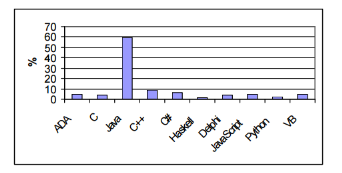We are all aware of Java, the high level programming language King, taught at almost all the universities in the world, including the students pursuing their Computer Science degree at Graduation level. But what’s really new and staggering is that the Stanford University has recognised that it’s extremely clunky and syntactically bloated. Specially for those, the one’s coming from a new learning curve(newbies).
The course CS 106A is the old Java now, as per the revised syllabus and the new formerly introduced one is JavaScript course CS 106J. You can watch them on YouTube too if you want to learn.
The decision to ditch Java has it’s caveats at one end. While there’s a lot to like about it, Java is perhaps the harshest language you can learn as a new comer. In fact, in this respect, it’s straight-up awful and perhaps boring too.
Let’s just take a look at perhaps the first Java program you’ll write, My World
class My World {
public static void main(String[] args) {
System.out.println("My World!");
}
}
Put yourselves in the shoes someone learning to code for the very first time. There’s a lot of scary things down here.
Now, let’s compare that to the JavaScript guys !
alert('My World!');
It’s a lot more digestible, isn’t it? Just by looking it, you can figure out what it does, even if you’ve never written a line of code in your entire life.
You are not immediately burdened with that, things like static typing, functions, and object oriented programming etc.
Now see the graph in my featured image where you just clicked to read this article, almost 60 percent of institutions surveyed reported using Java as an introductory language. C++ followed it, with nearly 10 % of institutions using it. Only 3 % of institutions used Python so far, which is hot and happening these days specially for developer arena.
Other languages that made the list include MATLAB, C and C++, Scheme, Scratch, and of course Java.
Too much sad to say, bad ideas often die hard, isn’t it !





Thank you very much for your blog.
I enjoyed reading this article.